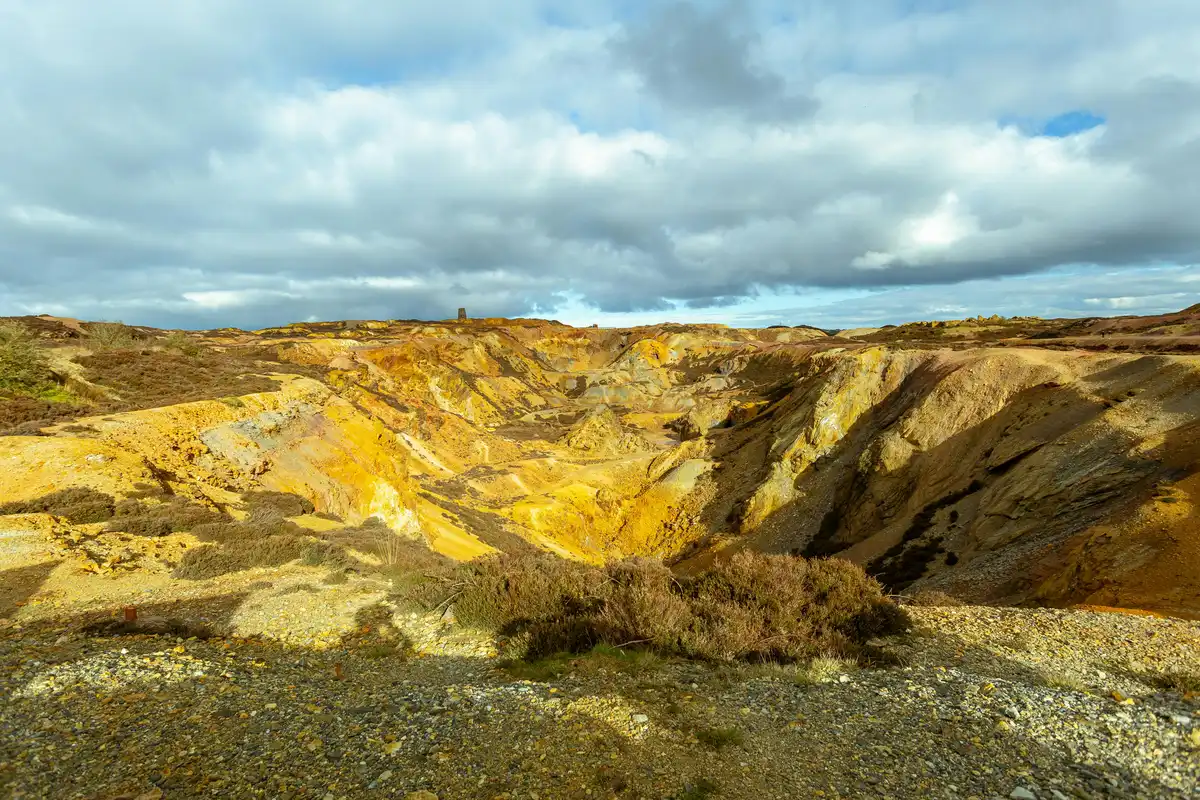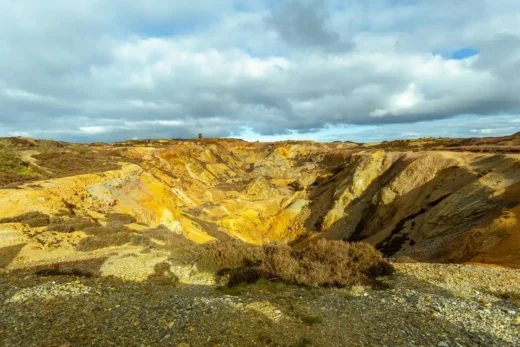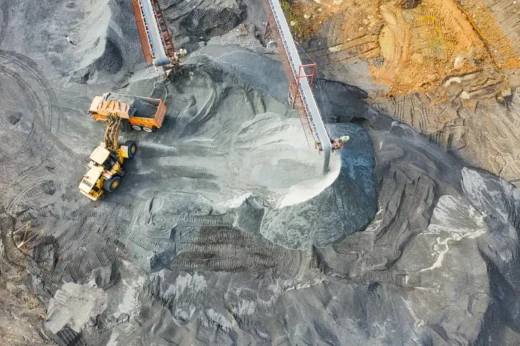Mine reclamation & closure services, mining environmental restoration, quarry site rehabilitation system
Comprehensive Mine Reclamation and Closure Environmental Services
23 September 2025
Mine Reclamation and Closure
Mine reclamation and closure represent the final and arguably most important phases of mining operations, transforming disturbed landscapes into productive, sustainable land uses while ensuring long-term environmental protection and community benefit. Professional reclamation and closure services require integrated expertise in environmental science, engineering, regulatory compliance, and project management to achieve successful outcomes.
The complexity of modern mine reclamation extends far beyond simple site cleanup, encompassing comprehensive ecosystem restoration, long-term environmental monitoring, financial assurance management, and stakeholder engagement that ensures mining legacies contribute positively to community and environmental well-being for generations to come.
Effective mine reclamation and closure planning begins during initial mine design phases and continues throughout operational life, integrating closure objectives into operational decisions that minimize reclamation costs while maximizing environmental and social benefits. This lifecycle approach ensures that closure goals are achievable and sustainable while meeting all regulatory requirements and stakeholder expectations.
Reclamation Planning and Design
Comprehensive Site Assessment and Baseline Studies
Comprehensive site assessment and baseline studies provide the foundation for effective reclamation planning by documenting pre-mining environmental conditions and identifying specific restoration targets that guide reclamation design and implementation. These studies establish measurable criteria for reclamation success while supporting regulatory compliance and stakeholder communication.
Professional baseline studies encompass multiple environmental disciplines including soil science, hydrology, ecology, and geochemistry to create detailed understanding of site conditions that inform reclamation planning and design decisions throughout the mine lifecycle.
Baseline assessment components include:
- Soil characterization and quality assessment for salvage and replacement planning
- Vegetation surveys and ecological habitat mapping for restoration target identification
- Hydrology and water quality analysis for watershed restoration planning
- Wildlife population studies and habitat suitability assessment for ecosystem restoration
- Geochemistry evaluation and acid rock drainage potential assessment
- Climate analysis and meteorological data collection for restoration design
- Cultural and archaeological resource documentation for site protection planning
- Land use evaluation and future use potential assessment for closure planning
Reclamation Design and Engineering
Reclamation design and engineering translate closure objectives into detailed technical plans that address landform reconstruction, soil replacement, revegetation, and infrastructure management while ensuring long-term stability and environmental protection. Professional design considers both immediate restoration needs and long-term sustainability requirements.
Effective reclamation design integrates multiple engineering disciplines including geotechnical engineering, hydrology, and ecological restoration to create comprehensive solutions that address complex interactions between physical, chemical, and biological processes affecting reclamation success.
Reclamation design elements include:
- Landform design and slope stability analysis for erosion control and long-term stability
- Soil handling and replacement planning for optimal growing medium establishment
- Revegetation design including species selection and establishment methodologies
- Drainage design and water management for erosion control and habitat creation
- Infrastructure removal planning and hazard elimination strategies
- Access control and long-term maintenance planning for site security
- Aesthetic design considerations for visual impact mitigation and community acceptance
- Monitoring system design for tracking reclamation performance and success
Regulatory Compliance and Permitting
Regulatory compliance and permitting ensure that reclamation plans meet all applicable legal requirements while obtaining necessary approvals for implementation activities. Professional regulatory services navigate complex permitting processes while maintaining compliance throughout reclamation implementation and long-term monitoring phases.
Comprehensive regulatory compliance involves coordination with multiple agencies at federal, state, and local levels while addressing various environmental laws and regulations that govern mine closure and reclamation activities.
Regulatory compliance includes:
- Reclamation permit application preparation and regulatory agency coordination
- Environmental impact assessment and documentation for closure activities
- Bonding and financial assurance calculation and management for closure costs
- Regulatory compliance monitoring and reporting throughout reclamation implementation
- Stakeholder consultation and public participation coordination for regulatory processes
- Permit modification and amendment processes for changing closure conditions
- Regulatory inspection coordination and compliance verification documentation
- Post-closure regulatory obligations and long-term monitoring compliance
Environmental Restoration and Rehabilitation
Soil Management and Replacement Systems
Soil management and replacement systems ensure that adequate growing medium is available for successful revegetation while maintaining soil quality throughout the salvage, storage, and replacement process. Professional soil management addresses both topsoil and subsoil materials that support plant establishment and long-term ecosystem development.
Effective soil management requires understanding of soil properties, storage techniques, and replacement methodologies that preserve soil structure, fertility, and biological activity essential for successful revegetation and ecosystem restoration.
Soil management services include:
- Soil salvage planning and implementation for quality preservation during removal
- Soil storage design and management for maintaining viability during extended storage periods
- Soil quality testing and amendment planning for optimizing growing conditions
- Soil replacement techniques and depth requirements for different revegetation objectives
- Erosion control and soil stabilization during and after soil replacement activities
- Soil compaction prevention and remediation for optimal root development
- Organic matter and nutrient management for supporting plant establishment
- Mycorrhizal inoculation and biological soil community restoration
Revegetation and Ecological Restoration
Revegetation and ecological restoration reestablish plant communities that provide erosion control, wildlife habitat, and aesthetic benefits while meeting reclamation objectives and regulatory requirements. Professional revegetation services utilize scientific principles and proven techniques to establish sustainable plant communities adapted to local conditions.
Successful revegetation requires understanding of plant ecology, soil conditions, climate factors, and long-term management requirements that ensure plant community establishment and long-term sustainability without ongoing maintenance inputs.
Revegetation services include:
- Species selection and seed mix development for site-specific conditions and objectives
- Seedbed preparation and soil conditioning for optimal germination and establishment
- Seeding and planting implementation using appropriate techniques for different species and conditions
- Erosion control and slope stabilization using both temporary and permanent measures
- Irrigation and water management for plant establishment in arid and semi-arid environments
- Fertilization and soil amendment programs for supporting plant growth and development
- Weed control and invasive species management for protecting desired vegetation
- Adaptive management and replanting for addressing establishment failures and changing conditions
Habitat Creation and Wildlife Management
Habitat creation and wildlife management restore ecological functions and wildlife populations while creating diverse ecosystems that support biodiversity and provide long-term environmental benefits. Professional habitat restoration addresses multiple ecosystem components including terrestrial, aquatic, and wetland habitats.
Effective habitat creation requires understanding of wildlife ecology, habitat requirements, and landscape connectivity that supports sustainable wildlife populations and ecosystem functions throughout the restored landscape.
Habitat restoration includes:
- Wildlife habitat design and creation for supporting diverse species and populations
- Wetland construction and restoration for aquatic habitat and water quality improvement
- Stream reconstruction and riparian habitat restoration for aquatic ecosystem support
- Pollinator habitat creation and native plant community establishment
- Nesting structure installation and breeding habitat enhancement
- Migration corridor establishment and landscape connectivity planning
- Predator control and wildlife protection during habitat establishment periods
- Long-term wildlife monitoring and adaptive habitat management
Water Management and Treatment
Surface Water Management and Quality Control
Surface water management and quality control address runoff collection, treatment, and discharge while preventing contamination of receiving waters and supporting aquatic ecosystem restoration. Professional water management ensures compliance with discharge standards while minimizing long-term water treatment requirements.
Comprehensive surface water management integrates engineering design with water quality treatment to create sustainable systems that protect water resources while supporting reclamation objectives and regulatory compliance throughout closure and post-closure periods.
Surface water management includes:
- Stormwater collection and conveyance system design for runoff management
- Sedimentation pond design and construction for suspended solids removal
- Water quality treatment system design and implementation for discharge compliance
- Erosion control and sediment prevention for protecting water quality
- Channel design and stream restoration for natural drainage establishment
- Flood control and extreme event management for long-term system stability
- Water quality monitoring and compliance reporting for regulatory requirements
- Maintenance planning and system optimization for long-term performance
Groundwater Protection and Monitoring
Groundwater protection and monitoring prevent contamination of groundwater resources while documenting water quality conditions throughout closure and post-closure periods. Professional groundwater services address both contamination prevention and remediation where necessary to protect this critical resource.
Effective groundwater protection requires understanding of hydrogeology, contaminant transport, and treatment technologies that prevent or remediate groundwater contamination while supporting beneficial uses of groundwater resources.
Groundwater services include:
- Hydrogeological characterization and groundwater flow modeling for protection planning
- Groundwater monitoring network design and installation for contamination detection
- Groundwater quality assessment and contamination source identification
- Containment system design and implementation for contamination prevention
- Groundwater treatment system design and operation for contamination remediation
- Monitoring well installation and maintenance for long-term water quality tracking
- Data analysis and reporting for regulatory compliance and trend identification
- Remediation system optimization and performance evaluation
Acid Rock Drainage Prevention and Treatment
Acid rock drainage prevention and treatment address one of the most significant long-term environmental challenges associated with mining operations. Professional acid drainage services utilize proven prevention and treatment technologies to eliminate or minimize acid drainage generation while treating existing contamination.
Comprehensive acid drainage management requires understanding of geochemistry, mineralogy, and treatment processes that prevent acid generation or neutralize acidic drainage to protect water quality and support ecosystem restoration.
Acid drainage services include:
- Geochemical characterization and acid generation potential assessment
- Acid drainage prevention through waste rock blending and cover systems
- Alkaline amendment and neutralization system design for acid prevention
- Passive treatment system design including constructed wetlands and limestone drains
- Active treatment system design and operation for acid drainage neutralization
- Long-term monitoring and maintenance planning for treatment system sustainability
- Cover system design and installation for preventing oxygen infiltration
- Performance evaluation and system optimization for long-term effectiveness
Closure Implementation and Project Management
Construction Management and Quality Control
Construction management and quality control ensure that reclamation activities are implemented according to design specifications while maintaining safety standards and environmental protection throughout the construction process. Professional construction management coordinates multiple contractors and activities while ensuring quality outcomes.
Effective construction management requires understanding of earthwork operations, revegetation techniques, and environmental controls that ensure reclamation work meets design standards and regulatory requirements while maintaining safety and environmental protection.
Construction management includes:
- Project scheduling and coordination for efficient reclamation implementation
- Contractor selection and management for specialized reclamation activities
- Quality assurance and inspection services for ensuring specification compliance
- Environmental compliance monitoring and protection during construction activities
- Safety management and hazard control for worker and public protection
- Materials testing and quality verification for construction materials and methods
- Progress reporting and documentation for project tracking and regulatory compliance
- Change management and adaptive implementation for addressing field conditions
Financial Management and Bonding Coordination
Financial management and bonding coordination ensure adequate funding for reclamation activities while managing costs effectively and maintaining financial assurance throughout the closure process. Professional financial services address both closure cost estimation and ongoing financial management.
Comprehensive financial management includes cost estimation, budget development, financial assurance management, and ongoing cost control that ensures reclamation objectives are achieved within budget constraints while meeting regulatory requirements.
Financial management services include:
- Reclamation cost estimation and budget development for closure planning
- Financial assurance calculation and bonding coordination for regulatory compliance
- Cost tracking and budget management throughout reclamation implementation
- Contractor payment processing and financial oversight for construction activities
- Cost optimization and value engineering for achieving reclamation objectives efficiently
- Financial reporting and documentation for regulatory and stakeholder communication
- Long-term financial planning for post-closure monitoring and maintenance
- Insurance coordination and risk management for financial protection
Long-Term Monitoring and Maintenance
Long-term monitoring and maintenance ensure reclamation success while documenting environmental performance and addressing maintenance needs throughout post-closure periods. Professional monitoring services provide systematic data collection and analysis that supports adaptive management and regulatory compliance.
Effective long-term monitoring requires understanding of ecosystem development, environmental indicators, and maintenance requirements that ensure reclamation objectives are achieved and maintained over extended time periods.
Monitoring and maintenance includes:
- Environmental monitoring program design and implementation for tracking reclamation success
- Vegetation monitoring and assessment for documenting revegetation success and ecosystem development
- Water quality monitoring and reporting for regulatory compliance and environmental protection
- Wildlife monitoring and habitat assessment for evaluating ecological restoration success
- Maintenance planning and implementation for addressing ongoing reclamation needs
- Data analysis and reporting for regulatory agencies and stakeholder communication
- Adaptive management planning and implementation for addressing changing conditions
- Monitoring system optimization and technology upgrades for improving efficiency and effectiveness
Stakeholder Engagement and Community Benefits
Community Consultation and Engagement
Community consultation and engagement ensure that reclamation planning considers community needs and preferences while building support for closure activities and long-term land management. Professional stakeholder engagement creates meaningful opportunities for community input while managing expectations and building consensus.
Effective community engagement requires understanding of local concerns, cultural values, and economic interests that influence community perspectives on reclamation and closure while creating opportunities for meaningful participation in planning and decision-making processes.
Community engagement includes:
- Stakeholder identification and engagement planning for comprehensive community input
- Public meetings and consultation sessions for information sharing and input collection
- Community advisory committees and ongoing engagement for sustained participation
- Cultural and traditional use considerations for respecting community values and practices
- Economic impact assessment and benefit identification for community development
- Visual impact mitigation and aesthetic design for community acceptance
- Access planning and recreational opportunity development for community benefit
- Long-term stewardship planning and community involvement in post-closure management
Economic Development and Land Use Planning
Economic development and land use planning create opportunities for beneficial post-mining land uses that support community economic development while achieving environmental restoration objectives. Professional planning services identify and develop opportunities for productive land uses that benefit communities and support sustainable development.
Comprehensive land use planning considers community needs, environmental constraints, and development opportunities that create lasting benefits while ensuring environmental protection and regulatory compliance throughout post-closure periods.
Land use planning includes:
- Post-mining land use assessment and opportunity identification for community benefit
- Economic feasibility analysis and development planning for beneficial land uses
- Infrastructure planning and development for supporting post-mining land uses
- Recreation and tourism development planning for community economic benefit
- Agricultural and forestry development planning for productive land use establishment
- Conservation and preservation planning for environmental protection and ecosystem services
- Industrial and commercial development planning where appropriate and beneficial
- Long-term land management planning and institutional controls for sustainable development
Technology Integration and Innovation
Advanced Monitoring Technologies
Advanced monitoring technologies enhance reclamation monitoring capabilities while reducing costs and improving data quality through automation, remote sensing, and real-time data collection systems. Professional technology integration optimizes monitoring programs while providing better information for adaptive management.
Modern monitoring technologies include satellite monitoring, drone surveys, automated data collection systems, and wireless sensor networks that provide comprehensive, cost-effective monitoring capabilities that support regulatory compliance and adaptive management.
Advanced monitoring includes:
- Remote sensing and satellite monitoring for large-area reclamation assessment
- Drone and aerial survey technologies for detailed site monitoring and documentation
- Automated weather and environmental monitoring stations for continuous data collection
- Wireless sensor networks for real-time water quality and environmental monitoring
- Geographic information systems for data management and spatial analysis
- Predictive modeling and data analysis for trend identification and forecasting
- Mobile applications and digital data collection for field monitoring efficiency
- Cloud-based data management and reporting systems for stakeholder access
Sustainable Reclamation Practices
Sustainable reclamation practices integrate environmental, social, and economic considerations to create long-term benefits while minimizing ongoing maintenance requirements and environmental impacts. Professional sustainability planning ensures that reclamation contributes to community well-being and environmental protection over extended time periods.
Comprehensive sustainability planning considers climate change adaptation, resource conservation, and community benefit optimization that creates lasting positive impacts while meeting reclamation objectives and regulatory requirements.
Sustainable practices include:
- Climate change adaptation and resilience planning for long-term reclamation success
- Carbon sequestration and greenhouse gas reduction through revegetation and soil management
- Renewable energy integration and energy efficiency for treatment systems and monitoring equipment
- Waste minimization and recycling throughout reclamation implementation
- Local materials sourcing and economic development support for community benefit
- Ecosystem services enhancement and natural capital development
- Biodiversity conservation and habitat connectivity for regional ecosystem support
- Traditional ecological knowledge integration and cultural practice support
Conclusion
Mine reclamation and closure services represent essential components of responsible mining that transform disturbed landscapes into productive, sustainable environments while ensuring long-term environmental protection and community benefit. Through comprehensive planning, scientific restoration techniques, and ongoing stewardship, professional reclamation services create positive mining legacies that contribute to environmental quality and community well-being.
The success of mine reclamation depends on integrated approaches that address environmental, social, and economic objectives while utilizing best available technologies and practices. Professional reclamation services provide the expertise, experience, and commitment necessary to achieve reclamation objectives that benefit all stakeholders and support sustainable development.
Effective mine reclamation and closure create opportunities for environmental enhancement, community development, and long-term stewardship that demonstrate mining’s potential to contribute positively to landscape restoration and community prosperity. These outcomes require professional expertise, stakeholder engagement, and long-term commitment to excellence in reclamation planning, implementation, and stewardship.
Comments on this guide to Mine reclamation & closure services | environmental restoration + site rehabilitation article are welcome.
Architecture

Photo by Lisa Anna on Unsplash
Contemporary Scottish Capital Property Designs – recent architectural selection below:
New National Centre For Music Edinburgh
British Medical Association HQ Edinburgh
Comments / photos for the Mine reclamation & closure services: quarry environmental restoration + mining site rehabilitation advice article page welcome.







